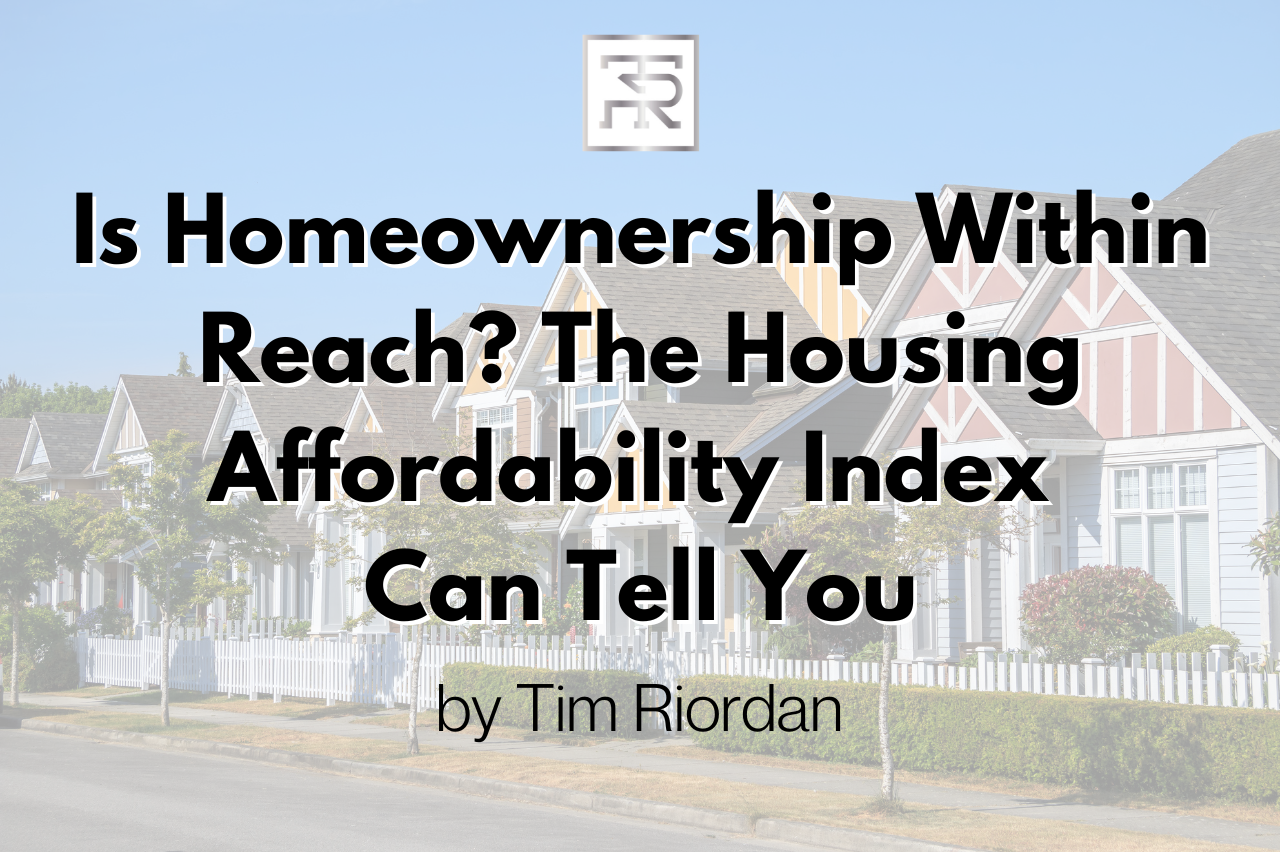Is Homeownership Within Reach? The Housing Affordability Index Can Tell You

When it comes to achieving the quintessential American dream of homeownership, one critical factor often comes into play: affordability. The housing market in the United States is a complex landscape influenced by a myriad of economic indicators, and understanding where it stands in terms of affordability can make all the difference in your pursuit of a new home. In this blog post, we'll dive deep into the concept of the Housing Affordability Index and explore how it can provide valuable insights into whether homeownership is within your reach.
Demystifying the Housing Affordability Index
The Housing Affordability Index (HAI) is a powerful tool that helps gauge the affordability of housing in a specific market. It takes into account various factors, including median home prices, average mortgage rates, and household income, to determine how accessible homeownership is to the general population. The index is usually presented as a number, with higher values indicating greater affordability.
Crunching the Numbers
Understanding the components of the Housing Affordability Index is crucial for interpreting what the numbers mean. Here's a breakdown of the key elements:
-
Median Home Prices: The average cost of homes in a given area. When these prices rise, the HAI can decrease, making it harder for potential buyers to enter the market.
-
Mortgage Rates: The interest rates charged on home loans. Lower rates can boost affordability by reducing the cost of borrowing.
-
Household Income: The earnings of families living in the area. Higher income levels generally contribute to better affordability.
Interpreting the Index
A Housing Affordability Index value above 100 indicates that the average family has more than enough income to afford the typical mortgage payment on a median-priced home. Conversely, a value below 100 suggests that housing costs may be too high for a typical family.
Spotting Trends and Patterns
By tracking the Housing Affordability Index over time, you can uncover valuable trends that might impact your decision to buy a home. For example, if the index has been steadily decreasing, it might indicate that the housing market is becoming less affordable. Conversely, a rising index might signal improving affordability.
Local Variations
Remember that the housing market is incredibly diverse, with different regions and cities experiencing unique trends. The Housing Affordability Index can help you compare affordability between different areas and make informed decisions about where to invest.
Using the HAI in Your Homebuying Journey
-
Setting Expectations: The index can provide a realistic perspective on what you can afford in your desired location.
-
Timing Your Purchase: Monitoring the index can help you time your home purchase for optimal affordability.
-
Negotiating Power: Armed with knowledge about the market's affordability, you can negotiate effectively with sellers.
-
Investment Opportunities: For real estate investors, the HAI offers insights into potential rental property markets.
In conclusion, the Housing Affordability Index is an essential tool for anyone considering buying, selling, or investing in the US real estate market. It provides a clear snapshot of affordability trends, helping you make informed decisions about your homeownership journey. Remember, achieving the American dream might be more attainable than you think—just let the numbers guide you.
Stay tuned for more insightful posts on the US real estate market, where we unravel trends, offer tips, and empower you to navigate the exciting world of property ownership.
Ready to get to know more? Contact us now!
Categories
Recent Posts










